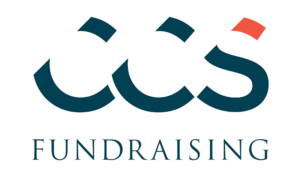In light of the recent publication of the Snapshot of Today’s Philanthropic Landscape, which contains data from Giving USA and other sources, several CCS Fundraising executives hosted a webinar to discuss the changing landscape of charitable giving in the US, and what organizations can do to prepare for the future. In this post, we recap some of the highlights of this presentation. The full recording can be accessed here.
How Did the Landscape Change?
Americans once again broke record by donating $427.71 billion to nonprofit organizations across the country and internationally. At the same time, giving from individuals decreased slightly to 68 percent of the total, which in 2017 was 70 percent. This change, coupled with concerns about the 2017 Tax Cuts and Jobs Act, led to increased speculation that 2018 was a challenging year for philanthropy.
However, nothing could be further from the truth. On average, $1.1 billion was given for each day of 2018, which goes to show the enduring generosity of Americans. In fact, 2018 was a year of leveling off after the unusually high giving in the previous year. During the fourth quarter of 2017, charitable giving saw a tremendous increase, likely due to uncertainty surrounding the potential impact of the incoming tax law. This contributed to the already significant total, and led to 2017 being such a banner year for philanthropy.
As for where the funds are going, there were no significant changes in 2018. The top five sectors remain: religion, education, human services, foundations, and healthcare. But while the main priorities of Americans have not changed greatly, there were some minor shifts that could point to further change. The sectors that saw the largest increase were international causes and environmental/animal causes. This could be an indication of a larger presence of younger donors, as these causes tend to be more popular with younger generations. Other sectors saw flat growth or even declines, but this could simply be a result of donors doubling down in 2017 and now returning to previous levels of giving.
Current Unique Trends in Giving
Donor Demographics
From 2000 to 2014, giving decreased in every age group, which supports the overall trend that there are fewer donors giving to fewer organizations, but they are increasing the funds they give to those organizations. 83 percent of total giving is coming from 20 percent of the population, and only 1 percent of the population is providing 49 percent of total giving. This highlights the influence that high net worth donors have, as well as the need to create strategies around developing and maintaining relationships with them.
The Impact of Volunteers
Volunteering remains a great stewardship practice, as 80 percent of volunteers also donate. Gaining volunteers is a reliable method to not only acquire donors, but to also retain them, since they have experienced the impact of your mission. This is particularly important because volunteer rates went up nearly 24 percent between 2016 and 2018. From serving on a board to operating a food bank, there has been a general increase in volunteer activity across all generations.
A Shift in Giving Vehicles
A noteworthy change in 2018 was that, while individual giving decreased, giving by foundations saw a significant increase. Part of the reason for this is that major donors and high net worth individuals are directing more of their giving into vehicles like donor-advised funds and private family foundations. Giving to donor-advised funds alone has more than doubled between 2009 and 2016, and many speculate that the trend will increase. But there is reason for optimism here, because while the sources of giving may be shifting, the overall total is still rising. This means that the giving decisions are still being made by those major donors that so many organizations hope to reach and inspire.
Strategies and Takeaways
In closing, here are some things to keep in mind, both when you evaluate your organization now, and when you plan for your organization’s future.
- Relationships are very important, maybe now more than ever, to create meaningful engagement and to invite investment. Organizations can be overly reliant on mass communication methods without supplementing that approach with the one on one discussions that can make the difference.
- If the majority of your support is coming from large donors who are aging, consider preparing for the future. What may be needed is support from more families who are mid-tier donors now, but could become large donors later in their lives.
- Efficiency is an important metric for trust. Donors demand transparency, and presenting the efficiency of your organization is one way to gain that trust. Donors are increasingly sophisticated and should be treated in a way that respects their interest and time.
- Now is the time to make your case and ensure that your organization is at the top of your donors’ list of priorities. In order to achieve this, it is paramount that you find meaningful ways for donors to experience your mission.
It’s competitive out there, so put effort into the things you can control: making donors feel like they made a difference by thanking them and being transparent with them. Make sure they understand your organization’s vision and how their gift affects the mission.
To access the webinar, “Reflections on Today’s Philanthropic Landscape,” click here.
CCS Fundraising is a strategic fundraising consulting firm that partners with nonprofits for transformational change. Members of the CCS team are highly experienced and knowledgeable across sectors, disciplines, and regions. With offices throughout the United States and the world, our unique, customized approach provides each client with an embedded team member for the duration of the engagement. To access our full suite of perspectives, publications, and reports, visit our insights page. To learn more about CCS Fundraising’s suite of services, click here.
